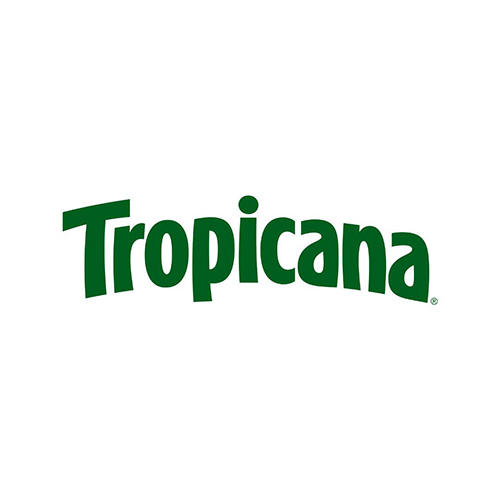Rebranding can be an effective way to revamp a company’s image, expand into new markets, or adapt to changing values. But it can also result in confusion, backlash, or worse loss of customer trust when done badly. So, what exactly is rebranding, and why does it sometimes go horribly wrong? This article explores the rebranding fails of popular brands and draws key takeaways for companies planning a brand makeover.
But let’s be clear: branding consistency isn’t about being robotic. It is about presenting consistently the same way, with the same core identity, values, and look-and-feel, wherever your people engage with you. Sounds easy? It’s not. But when it works, it can create deep trust. When it fails, it can erode the credibility you’ve spent years building quietly (or loudly).
What Is Rebranding?
At its core, rebranding is the process of changing the corporate image of an organization. It might involve a new logo, different messaging, updated visuals, or a complete overhaul of the brand identity. Whether it’s a digital rebranding or a full-scale corporate rebranding, the goal is usually to stay relevant and competitive.
But as countless rebranded brands have shown us, it’s not always smooth sailing.
Why does consistency of brand matter? Because people trust what they know. The more consistently your brand appears visually and emotionally the more likely it will be remembered, honored, and ultimately preferred. Inconsistent branding, however, can leave others wondering about your legitimacy, professionalism, or even authenticity.
When Rebranding Goes Awry
Let’s begin with a couple of rebranding misfires that hit the headlines and not for good reasons.
- Tropicana – A Squeeze Too Far
In 2009, Tropicana rolled out a new packaging design aimed at giving it a modern look. The glitch? Consumers didn’t identify the product. Sales plummeted 20% and an enormous $30 million loss in only two months. The company hastily switched back to its previous design.
But consistency is not just visual. It’s also about your sound. Does your brand sound conversational or formal? Do you make jokes on Twitter but sound ultra serious in email newsletters? Tone inconsistencies can confuse your audience, while a consistent brand voice creates emotional trust.
Why does consistency of brand matter? Because people trust what they know. The more consistently your brand appears visually and emotionally the more likely it will be remembered, honored, and ultimately preferred. Inconsistent branding, however, can leave others wondering about your legitimacy, professionalism, or even authenticity.

Lesson: Don’t tamper with brand identity customers are emotionally attached to. A shiny brand redesign small business strategy may do the trick for a startup, but legacy brands have to exercise caution.
- Gap – The 6-Day Logo Disaster
Gap introduced a new logo in 2010, anticipating a new image. The reaction was immediate. Social media erupted with condemnation, and Gap went back to its original logo within six days.
The challenge is making sure your brand “feels” the same across platforms, even if the delivery varies. That’s the secret sauce of brand consistency across digital platforms. You’re adjusting your strategy for the platform while anchoring it in the same brand DNA.
But consistency is not just visual. It’s also about your sound. Does your brand sound conversational or formal? Do you make jokes on Twitter but sound ultra serious in email newsletters? Tone inconsistencies can confuse your audience, while a consistent brand voice creates emotional trust.
Why does consistency of brand matter? Because people trust what they know. The more consistently your brand appears visually and emotionally the more likely it will be remembered, honored, and ultimately preferred. Inconsistent branding, however, can leave others wondering about your legitimacy, professionalism, or even authenticity.

Lesson: Announcing rebranding is more than a logo change—it calls for customer participation and explanation. A rebranding announcement email or campaign should be a narrative, not merely reveal a logo.
Is Rebranding a Good Idea?
You may be thinking, is rebranding ever a good idea? The short answer is it depends. When done with purpose, market research, and clarity, rebranding can open doors. But without a rebranding marketing strategy, it’s easy to get lost.
Here are a few rebranding strategy examples that worked:
Apple: From the brink of bankruptcy, Apple’s turnaround by Steve Jobs is one of the most rebranding success stories ever. From design to its clean, minimalist branding, Apple demonstrated how to successfully rebrand your company and make it a cultural movement.

Old Spice: Initially targeted at older men, Old Spice overhauled its brand with funny commercials, social media marketing, and a more edgy brand voice—completely capturing a much younger audience.

Why Do Brands Rebrand?
The purpose of rebranding is different. Some just want to appeal to a new consumer base; others require repairs because of reputational issues. There are also various types of rebranding partial rebranding (such as a new tagline) versus a full overhaul.
Consistency is important for multi-site rebranding. Whether you have one site or ten stores, having a consistent rebranding message means your audience recognizes the shift.
How to Rebrand Your Business the Right Way
If you’re considering a rebrand, here are some tips based on failures and successes alike:
Know Your Audience: Before you make adjustments, poll your customers. Their view of your brand is more important than the opinions of insiders.
Define Your Objectives: Ask yourself: Why are we doing this? Understanding why—whether it’s tired imagery or a change of direction—helps frame the process.
Craft a Unified Strategy: From visual elements to rebranding website content, your rebranding marketing must be comprehensive and consistent.
Get Communication Channels Ready: Send a well-considered rebranding announcement letter to customers. Explain the “why,” not the “what.”

Keep the Cost in Mind: How much does it cost to rebrand a small business? From a few hundred to more than six figures, depending on scale. Plan for everything logo creation, to digital rebranding initiatives.
The Pros and Cons of Rebranding
Let’s be honest—rebranding pros and cons exist. Here’s a quick rundown:
Advantages of Rebranding:
- New appeal to new demographics
- Improved alignment with changing business objectives
- Market competitive advantage
Disadvantages of Rebranding:
- Risk of alienating long-time customers
- Risk of heavy expense with unknown return
- Risk of brand confusion if not done correctly
Before going through the process of rebranding products or services, think about the lasting effect.
Final Thoughts
Rebranding isn’t something to be undertaken lightly. The tale of brands that rebranded and tanked is full of cautionary lessons. But with the right rebranding ideas, a defined rebranding marketing plan, and open and honest communication, a company can successfully reposition itself.
Just keep in mind rebranding isn’t all about looks. It’s about purpose, identity, and trust. And with deliberateness and honesty, it can turn your business from flailing too iconic.
Whether you’re venturing into a brand redesign small business or navigating the corporate rebranding maze, the main lesson is straightforward: understand who you are, who your people are, and why the shift is necessary. Only then can your rebranding effort result in success instead of a very public failure.



